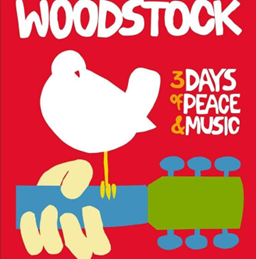
The Woodstock Music Festival, held in August 1969, is remembered as a pivotal moment in rock-n-roll history and the most iconic event to represent the counterculture movement of the 1960’s. I recently had a chance to visit Bethel, NY (where the Festival took place) to check out the site and attend a concert. Prior to my trip I started to wonder:
How the hell did 500,000 people get enough info to make their way to the Woodstock Music Festival without, Facebook, Instagram, email, Ticketmaster or Uber?
So, after a little research, I concluded that Woodstock is a shining example of several absolutely “groovy” and effective marketing strategies. That are still very relevant today. Check them out:
- It’s About the Experience
Woodstock was more than a music concert. The organizers wanted to create an experience that provided an escape from the craziness of the 60’s and celebrated the values of the younger generation. Today’s consumers seek experiences, not just products or services. Your business should aim to create memorable, multifaceted experiences that engage customers on multiple levels. This could be through experiential marketing events, interactive online content, or immersive brand experiences.
- Understand Your Audience
The success of Woodstock rested on a deep understanding of its target audience – the youth counterculture of the late 1960s. Today a successful business must spend time to understand their audience’s needs, desires, and pain points. Utilizing data analytics, conducting market research, and engaging with your audience can provide insights that drive more effective marketing strategies. The Woodstock organizers did not have any Google analytics, but they did have a deep understanding of their target market because they were part of it.
- Authenticity is Everything
Woodstock captured the spirit of the 60’s by promoting the concepts of peace, love, and music. The festival’s authenticity resonated deeply with its audience, making it very attractive to the counterculture movement. Being authentic and mission driven underscores the importance of aligning your brand with genuine values and messages. Consumers today, much like the Woodstock crowd, crave authenticity and can easily spot disingenuousness.
- Word of Mouth is Powerful
We rely on the internet for almost everything. Social media and texting have replaced conversations. But somehow the organizers of Woodstock attracted a half a million attendees. A lot of it was done the old fashion way– by word of mouth. The Festival was initially publicized through underground channels and grassroots efforts, stoking curiosity and excitement. In today’s digital age, leveraging word-of-mouth marketing through social media and influencer partnerships can create an organic buzz and credibility around your brand.
- Embrace Community
Woodstock was much more than the music; it was about being part of a larger community. The sense of belonging and shared experience made the Festival memorable. Your business should focus on building communities around your brands, fostering a sense of belonging, and encouraging customer loyalty. Tools like social media groups, forums, and customer-centric events can help cultivate this community spirit.
- Be Ready to Adapt
Woodstock almost did not happen because the original location fell through at the last minute. The size of the crowd far exceeded expectations and created logistical nightmares. Oh, yea and it rained on and off for the entire three days. But the organizers’ ability to adapt and pivot was crucial to the Festival’s eventual success. Your business needs to be flexible and ready to respond to unforeseen issues. Whether it’s adjusting campaign strategies or reacting to market shifts, adaptability is a key component of effective marketing.
- Harness the Power of Collaboration
Once again there was no social media but Woodstock brought together a diverse lineup of artists and performers, proving the value of collaborative efforts. Partnering with other brands, influencers, or even customers can create synergistic opportunities. Co-branding, joint ventures, and user-generated content are modern methods to harness collaborative power for mutual benefit.
Final Thoughts
The music and marketing lessons of the Woodstock festival are timeless. The rapid changes in technology and shifting consumer behaviors have made reaching your target customer extremely challenging. But if you embrace the seven marketing lessons from Woodstock, you can create lasting, meaningful connections with your customers (your audience) just as Woodstock did way back in 1969.
